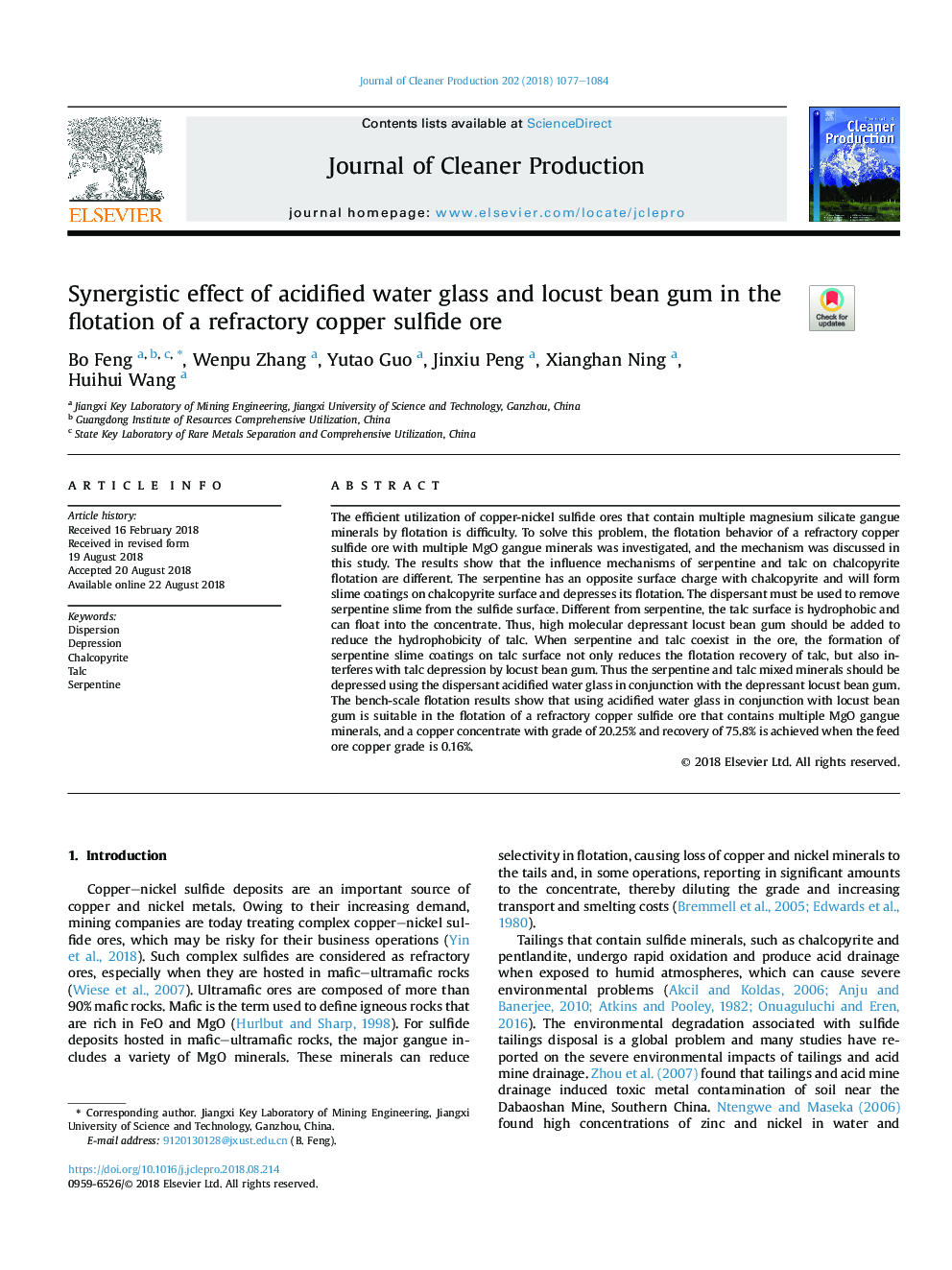| Article ID | Journal | Published Year | Pages | File Type |
|---|---|---|---|---|
| 10136433 | Journal of Cleaner Production | 2018 | 8 Pages |
Abstract
The efficient utilization of copper-nickel sulfide ores that contain multiple magnesium silicate gangue minerals by flotation is difficulty. To solve this problem, the flotation behavior of a refractory copper sulfide ore with multiple MgO gangue minerals was investigated, and the mechanism was discussed in this study. The results show that the influence mechanisms of serpentine and talc on chalcopyrite flotation are different. The serpentine has an opposite surface charge with chalcopyrite and will form slime coatings on chalcopyrite surface and depresses its flotation. The dispersant must be used to remove serpentine slime from the sulfide surface. Different from serpentine, the talc surface is hydrophobic and can float into the concentrate. Thus, high molecular depressant locust bean gum should be added to reduce the hydrophobicity of talc. When serpentine and talc coexist in the ore, the formation of serpentine slime coatings on talc surface not only reduces the flotation recovery of talc, but also interferes with talc depression by locust bean gum. Thus the serpentine and talc mixed minerals should be depressed using the dispersant acidified water glass in conjunction with the depressant locust bean gum. The bench-scale flotation results show that using acidified water glass in conjunction with locust bean gum is suitable in the flotation of a refractory copper sulfide ore that contains multiple MgO gangue minerals, and a copper concentrate with grade of 20.25% and recovery of 75.8% is achieved when the feed ore copper grade is 0.16%.
Related Topics
Physical Sciences and Engineering
Energy
Renewable Energy, Sustainability and the Environment
Authors
Bo Feng, Wenpu Zhang, Yutao Guo, Jinxiu Peng, Xianghan Ning, Huihui Wang,
